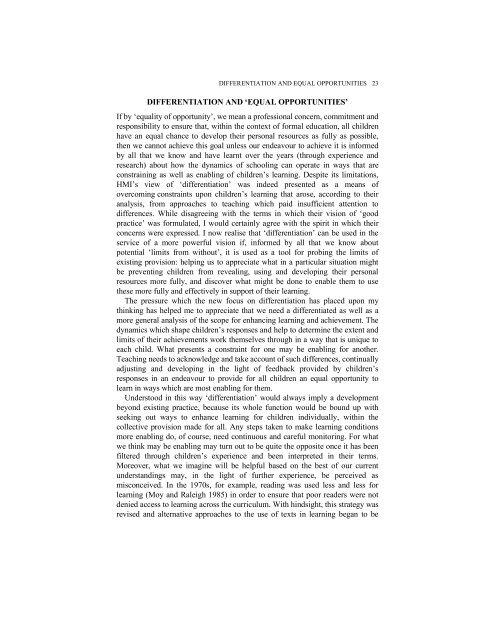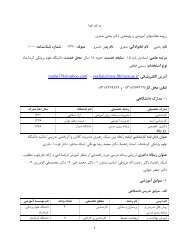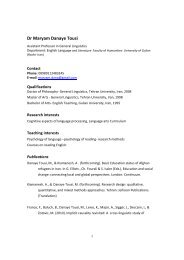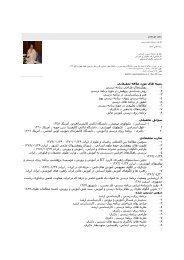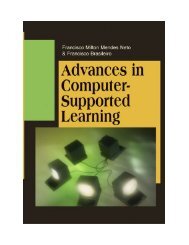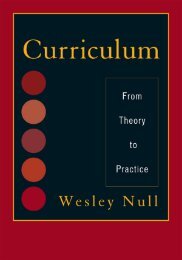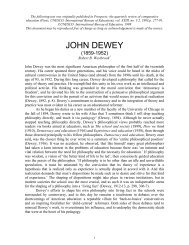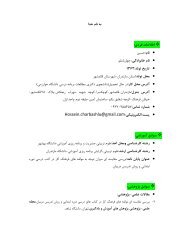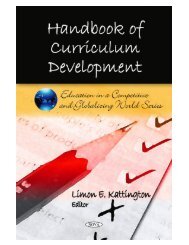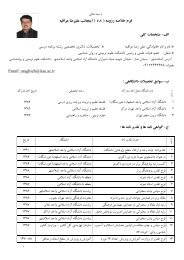Edited by
Edited by
Edited by
You also want an ePaper? Increase the reach of your titles
YUMPU automatically turns print PDFs into web optimized ePapers that Google loves.
DIFFERENTIATION AND EQUAL OPPORTUNITIES 23DIFFERENTIATION AND EQUAL OPPORTUNITIESIf <strong>by</strong> equality of opportunity, we mean a professional concern, commitment andresponsibility to ensure that, within the context of formal education, all childrenhave an equal chance to develop their personal resources as fully as possible,then we cannot achieve this goal unless our endeavour to achieve it is informed<strong>by</strong> all that we know and have learnt over the years (through experience andresearch) about how the dynamics of schooling can operate in ways that areconstraining as well as enabling of childrens learning. Despite its limitations,HMIs view of differentiation was indeed presented as a means ofovercoming constraints upon childrens learning that arose, according to theiranalysis, from approaches to teaching which paid insufficient attention todifferences. While disagreeing with the terms in which their vision of goodpractice was formulated, I would certainly agree with the spirit in which theirconcerns were expressed. I now realise that differentiation can be used in theservice of a more powerful vision if, informed <strong>by</strong> all that we know aboutpotential limits from without, it is used as a tool for probing the limits ofexisting provision: helping us to appreciate what in a particular situation mightbe preventing children from revealing, using and developing their personalresources more fully, and discover what might be done to enable them to usethese more fully and effectively in support of their learning.The pressure which the new focus on differentiation has placed upon mythinking has helped me to appreciate that we need a differentiated as well as amore general analysis of the scope for enhancing learning and achievement. Thedynamics which shape childrens responses and help to determine the extent andlimits of their achievements work themselves through in a way that is unique toeach child. What presents a constraint for one may be enabling for another.Teaching needs to acknowledge and take account of such differences, continuallyadjusting and developing in the light of feedback provided <strong>by</strong> childrensresponses in an endeavour to provide for all children an equal opportunity tolearn in ways which are most enabling for them.Understood in this way differentiation would always imply a developmentbeyond existing practice, because its whole function would be bound up withseeking out ways to enhance learning for children individually, within thecollective provision made for all. Any steps taken to make learning conditionsmore enabling do, of course, need continuous and careful monitoring. For whatwe think may be enabling may turn out to be quite the opposite once it has beenfiltered through childrens experience and been interpreted in their terms.Moreover, what we imagine will be helpful based on the best of our currentunderstandings may, in the light of further experience, be perceived asmisconceived. In the 1970s, for example, reading was used less and less forlearning (Moy and Raleigh 1985) in order to ensure that poor readers were notdenied access to learning across the curriculum. With hindsight, this strategy wasrevised and alternative approaches to the use of texts in learning began to be


